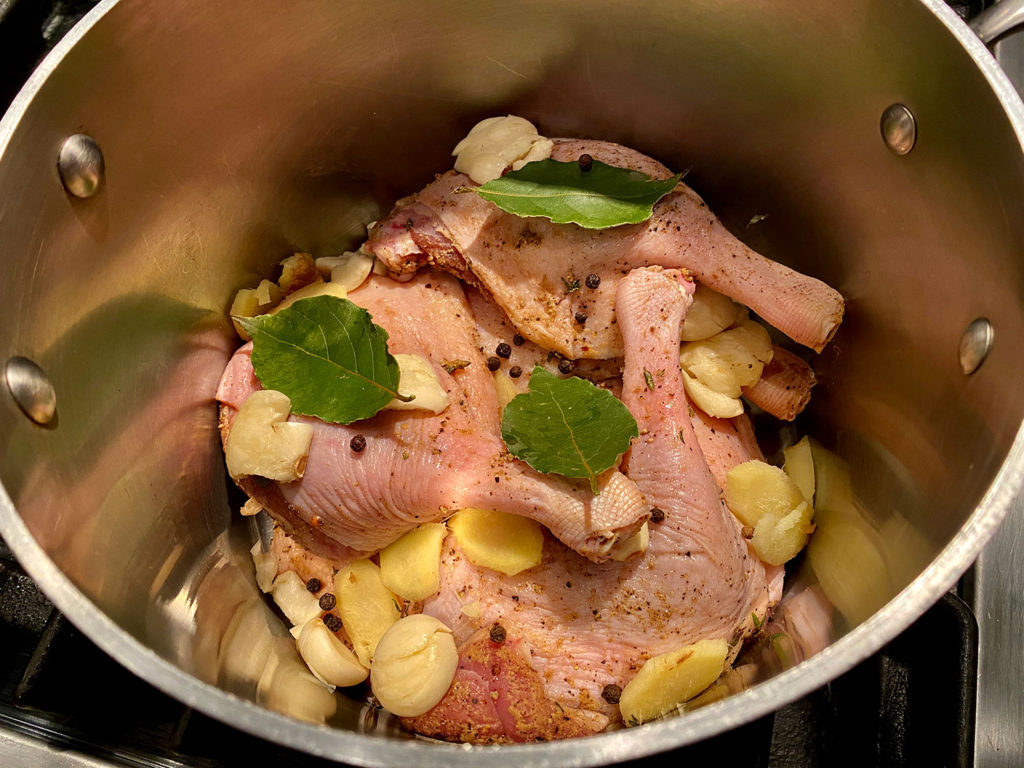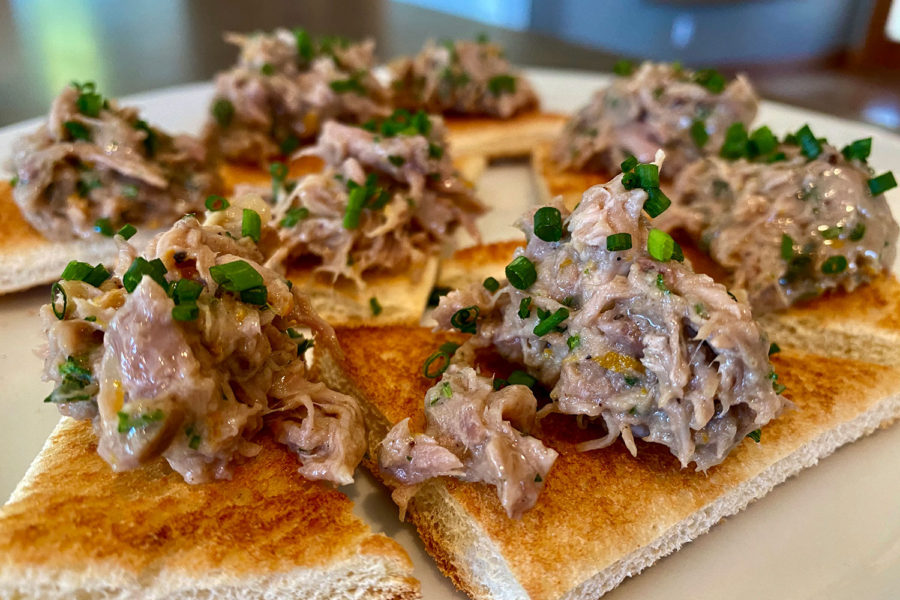On our travels to France, my first grocery store shopping trip always includes several containers of rillettes (usually pork or chicken). Before we make our own during our stay, this is a quick and easy snack for our weary travelers, and not something we commonly find in US markets. Recently, I was asked to prepare a classic French meal for a birthday celebration, including appetizer. I suggested a rillette, and better yet, made with duck.
After conducting some online research, I unearthed a variety of options. My goal was to balance great results without overwhelming our readers with the usual laundry list of classic recipe ingredients and preparation time that would discourage most from even attempting the effort. Here is a little information about what we are going to create:
According to Food Republic,
When it comes to the softer side of charcuterie — that is, preserved meats other than whole cured cuts and dry sausages — the lines are a little blurred. How much do you really know about the blended, shredded and layered delights that are pâtés, terrines and rillettes? All pâtés are terrines, but not all terrines are pâtés. Rillettes make great pasta stuffing, but terrines do not. Pâtés and rillettes can be made with very little effort, but terrines take years to master. What are the big differences between these three staples of the classic charcuterie plate or appetizer spread, and how do you serve them? We turned to the New York City outpost of renowned Parisian bistro Le Coq Rico, where chef Antoine Westermann specializes in poultry dishes and makes all three of these dishes in his restaurants Stateside and in France. Rillettes are meat, fish or poultry that’s been chopped or shredded, seasoned with salt and pepper and preserved slowly in its own fat, the fat of another animal, olive oil or butter to make a thick spread for sandwiches, crudité or pasta stuffing. If that sounds a lot like confit, you’re right — the difference is that confit items are usually cooked and served whole, whereas rillettes are the result of shredding the confit. ‘Confit is just the cooking method,’ Westermann clarifies. ‘It is a traditional way of preserving meat, which also adds a lot of flavor to the meat. Because rillettes are so rich, you need plenty of salt and other spices to help balance the flavors.’ How are rillettes different from pâtés and terrines? Westermann says, ‘Pâtés and terrines are smoother and usually use organ meat, like liver,’ whereas rillettes will use meat from the leg, thigh, shoulder or rib. ‘We mostly eat rillettes with bread and cornichons as an appetizer or snack. Pâté and rillettes are not really a meal by themselves,’ Westermann adds. This preparation is also known as ‘potted’ meat or fish.
If you are looking for duck legs, I suggest Mary’s brand, which you can find frozen at better markets, OR for those in the East Bay of San Francisco, fresh legs are always available (next to the chicken legs) at Verbrugge Meats and Seafood on College at Claremont in Oakland, and at the Berkeley Bowl Marketplace. Buy a bunch – for use making the rillettes AND to confit for an exceptional centerpiece to a meal!
Rillettes de Canard (Duck Rillettes)
6 whole duck legs (about 2 1/2 – 3 pounds)
1 bunch, fresh thyme; leaves removed from 1/2, and the other half left whole sprigs
2 tablespoons kosher salt
2 teaspoons freshly ground black pepper
1 tablespoon ground ginger
10 cups chicken stock
1 tablespoon whole black peppercorns, crushed
10 cloves garlic, peeled and bruised (gently smashed)
2 bay leaves
1 – 2-inch piece ginger root, peeled and thinly sliced
3 tablespoons brandy
1 tablespoon grated orange zest
2 tablespoons minced chives
For serving: toast points (white bread trimmed of crusts; cut into triangles, toasted), cornichons, and marinated cocktail onions
Note: This can be up to a 2-day process. So, plan accordingly.
• Place the duck legs in a bowl. Add the thyme leaves, kosher salt, ground pepper and ginger and rub into the legs until they are well-coated. Place the legs in a large ziplock bag, seal, and refrigerate, if possible, for 4 hours minimum or up to 8.
• After refrigerating, take legs from the bag, and remove the excess spice mixture. Place the legs in a 4-quart stockpot. Add the remaining thyme sprigs, stock, peppercorns, garlic, bay leaves, and ginger; bring to a boil. Reduce heat to medium-low; cook covered slightly, until the meat is very tender, 1 1/2 to 2 hours. When done, remove from the heat and let legs cool in the pan until they reach room temperature. Cover and chill overnight.

• The next day, scrape the solidified fat from the top of the pan. Remove the meat from the bones, and discard the skin, bones, and gristle. Finely shred the meat. Strain and reserve the stock.

• Transfer the meat to a bowl and add 1/4 cup of the stock, brandy, parsley, orange zest, and cloves. Stir to combine. Taste; add kosher salt, and freshly ground black pepper, to taste.
• To serve: place a 2 tablespoon portion of chilled rillette on each toast point, sprinkle with chives, and serve with cornichons and cocktail onions.

• To store: place in a covered container and refrigerate for up to three days.
Makes about 3 cups finished rillettes. Serves 10 – 12 as an appetizer (approximately 3 per person)
Recipe inspired by Saveur; adapted and modified by Epicurean Exchange








